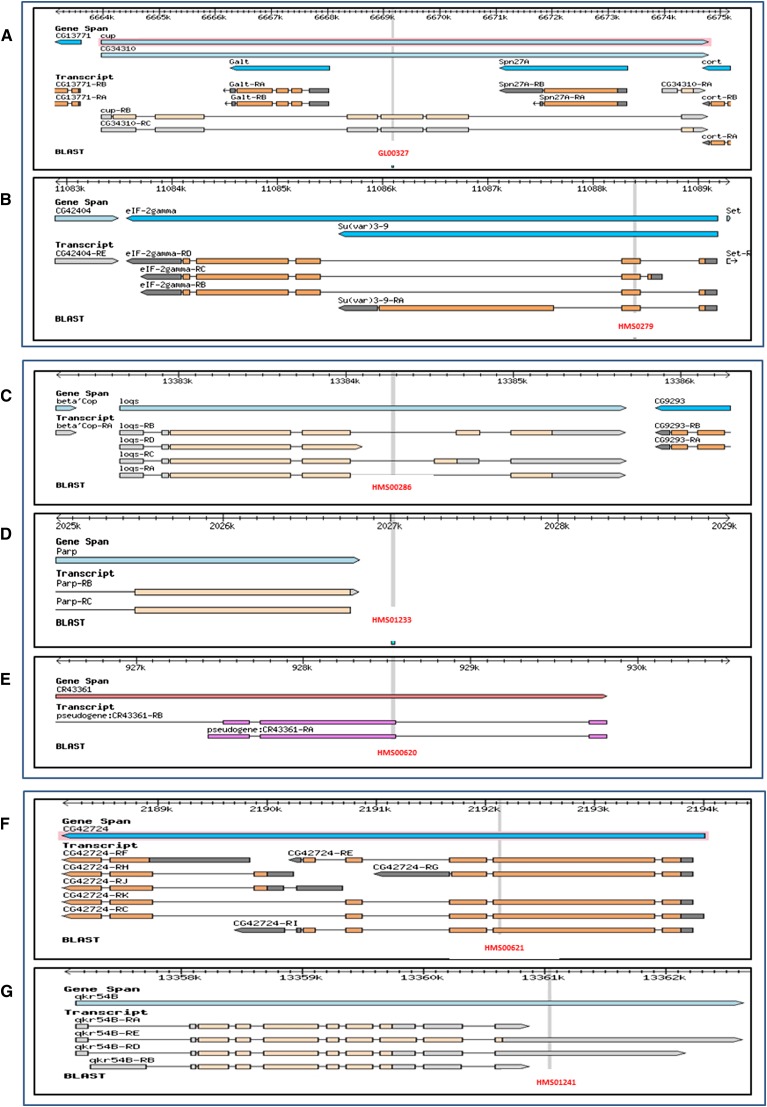Figure 2.
Issues associated with RNAi reagents and annotations. (A and B) Examples of reagents that target multiple genes. (A) TRiP line GL00327 targets both cup and CG34310 because both the genome and transcript sequences of these two genes fully overlap. (B) TRiP line HMS00279 targets the common exon shared by both the eIF-2gamma and Su(var)3-9 genes. Since the transcript sequence of both of these genes only partially overlap, it is possible to design specific RNAi reagents targeting either eIF-2gamma or Su(var)3-9. (C–E) Examples of reagents that do not target any gene. (C) TRiP reagent HMS00286 aligns to the intron of gene loqs due to a change in the intron–exon junction(s) of loqs gene annotation. (D) TRiP reagent HMS01233 aligns to an intergene region due to a change in the Parp gene boundary. (E) TRiP line HMS00620 aligns to the newly annotated pseudogene CR43361. (F and G) Examples of reagents that do not target all isoforms. (F) TRiP reagent HMS00621 targets five of the eight isoforms of gene CG42724. CG42724 lacks any common exon shared by all isoforms. (G) TRiP reagent HMS01241 targets two of the four isoforms of gene qkr54B. An improved reagent can be designed against the exons shared by all four isoforms.

